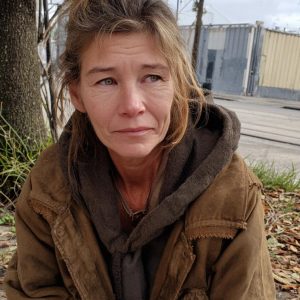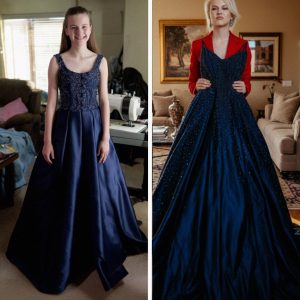The story follows a 70-year-old widower who spends his mornings hauling a worn cart filled with an easel, canvases, and dwindling paints to a quiet park where he has found both refuge and purpose. Once an electrician, he built a simple but content life with his wife, Marlene, whose death to lung cancer left him adrift. Years later, tragedy struck again when his 33-year-old daughter Emily was hit by a drunk driver, surviving catastrophic injuries but losing her ability to walk. Insurance could only do so much, and the cutting-edge rehabilitation she needed felt forever out of reach. Caring for her full-time became his world, but grief, exhaustion, and fear pressed in from all sides. Painting emerged not as a career but as a lifeline — a way to steady trembling hands and give shape to emotions too heavy to carry in silence. Slowly, he found solace in oils, in the park’s stillness, and in painting scenes of rural nostalgia that stirred memory and longing in passersby.
Although he sold a canvas occasionally, winter pushed him close to breaking. Bitter cold stiffened his joints and froze his paints, yet he kept returning to the park because every dollar mattered and because painting had become the only thing tethering him to hope. Emily tried to encourage him, insisting that someone would one day recognize what he created, but he struggled to believe it. One autumn afternoon, while working under soft, washed-out light, he noticed a lost little girl — Lila — crying near the path. She had wandered from her school group and couldn’t find her teacher. He comforted her with warmth and a story he once told Emily, then called the police. When her frantic father arrived, his relief was overwhelming, and although grateful, he accepted the painter’s claim that no reward was necessary — only reassurance that the child would be loved and safe.
The next morning, a limousine unexpectedly appeared in front of his home. Inside were Lila, her stuffed bunny, and her father, Jonathan Hale of Hale Industries. Jonathan explained that he wanted to thank him properly, not with charity but with payment for the paintings he had seen — art he felt captured emotion and memory with rare depth. He intended to showcase the paintings in a new community center and believed they deserved to be seen by many, not sold one by one in the cold. When the painter opened the envelope Jonathan offered, he found a check large enough to pay for every aspect of Emily’s advanced rehabilitation and still give them financial breathing room they hadn’t known in years. Though overwhelmed and hesitant, he accepted after realizing Jonathan wasn’t just offering gratitude — he was offering the chance to change Emily’s future. The moment marked a turning point not unlike the day Lila had wandered into his life.
What followed was a slow but powerful return to hope. Jonathan purchased every painting the man had — those displayed at the park and those tucked carefully inside the house — and soon after, his foundation funded the creation of a proper studio for him. With a stable salary and the burden of debt lifted, the painter finally watched Emily begin the therapy that once felt impossibly out of reach. Her progress was gradual, a painstaking series of small victories interrupted by setbacks, pain, and doubt, but her determination never faltered. Eventually, she stood. Then walked with support. Then took independent steps. Each milestone felt like a miracle reclaiming something life had unjustly stolen, restoring not just her mobility but a shared sense of possibility for the future. For her father, witnessing each step was like being handed back pieces of a broken heart.
Though he now paints in a warm studio instead of through winter gusts, he still returns on weekends to the park bench by the pond. The crooked seat, the ducks, and the quiet morning light remind him of where his unexpected second life began — with a lost child whose fear echoed his own sense of being lost, and with a simple act of compassion that rippled outward in ways he could never have foreseen. People still stop to study his work and often comment that his paintings feel like home, as though they capture places both real and remembered. He answers, as always, “Maybe they are.” He keeps one painting for himself — a little girl in a pink jacket with her stuffed bunny by the water — because that moment didn’t just redirect the course of his daughter’s future. It restored his faith, renewed his purpose, and reminded him that sometimes, the smallest kindness can change the story of an entire life.




